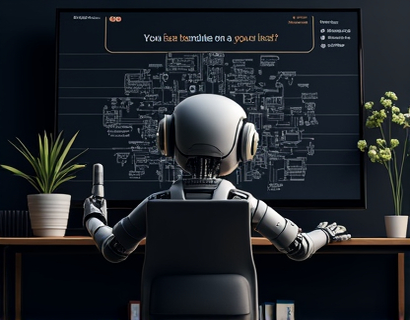Smart Home Elevation: Embracing the Future of Living with Cutting-Edge Appliances
In the rapidly evolving landscape of home technology, the concept of a smart home has transcended from a futuristic dream to a tangible reality. The integration of advanced appliances and devices into our living spaces is not just a trend but a transformative shift towards a more efficient, convenient, and sustainable lifestyle. This article delves into the latest innovations in smart home solutions, highlighting appliances that are redefining the way we live, work, and interact with our environments.
The journey towards a smarter home begins with understanding the core components that make up a modern smart home system. At the heart of this ecosystem are intelligent appliances that communicate with each other and with the homeowner through interconnected networks. These devices leverage the Internet of Things (IoT) to provide seamless integration, remote control, and automated operations. From smart thermostats to intelligent lighting systems, each appliance plays a crucial role in creating a cohesive and responsive living environment.
Smart Thermostats: The Brain of Energy Efficiency
One of the most impactful smart appliances is the smart thermostat. These devices go beyond simple temperature control by learning your preferences and adjusting settings based on your habits. Advanced models like the Nest Learning Thermostat or the Ecobee SmartThermostat use algorithms to optimize heating and cooling, reducing energy consumption and lowering utility bills. They can be controlled via smartphones, allowing you to adjust settings from anywhere, ensuring your home is always at the perfect temperature upon your return.
Moreover, smart thermostats integrate with other smart devices to create a holistic home automation system. For instance, they can work in tandem with smart windows that adjust their tint based on external temperatures, further enhancing energy efficiency. This synergy not only makes your home more comfortable but also more sustainable, aligning with the growing emphasis on eco-friendly living.
Intelligent Lighting: Illuminating the Smart Home
Lighting is another area where smart technology has made significant strides. Gone are the days of manual switches and timers. Smart lighting systems, such as those offered by Philips Hue or LIFX, allow for precise control over brightness, color, and scheduling. These systems can be managed through voice commands, mobile apps, or even automated routines that adjust lighting based on the time of day or occupancy.
The benefits of smart lighting extend beyond convenience. By simulating natural light cycles, these systems can improve mood and productivity. Additionally, they contribute to energy savings by automatically turning off when rooms are unoccupied. The ability to create custom scenes for different activities, such as reading or entertaining, adds a layer of personalization that enhances the overall living experience.
Smart Security: Protecting Your Home with Advanced Technology
Security is a paramount concern for homeowners, and smart security appliances have revolutionized the way we protect our homes. Smart cameras, door locks, and motion sensors form a comprehensive security network that provides real-time monitoring and alerts. Devices like the Ring Doorbell or Nest Cam offer high-definition video, night vision, and two-way communication, allowing you to stay connected and secure no matter where you are.
These devices can be integrated into a central security system, providing a unified interface for managing all aspects of home safety. Automated alerts notify you of any suspicious activity, and some systems even integrate with local law enforcement for quicker response times. The peace of mind that comes from knowing your home is well-protected is invaluable, making smart security an essential component of any modern home.
Smart Kitchen Appliances: Transforming Culinary Experiences
The kitchen is often the heart of the home, and smart appliances are elevating the culinary experience to new heights. Smart refrigerators, such as the Samsung Family Hub, go beyond basic storage by featuring built-in touchscreens, grocery lists, and even video chat capabilities. These refrigerators can track expiration dates, suggest recipes based on available ingredients, and integrate with other smart devices to create a seamless cooking experience.
Smart ovens and stoves, like the LG Smart Oven, offer precise temperature control, pre-heating via smartphone, and even cooking assistance through integrated recipes. These appliances not only make cooking more convenient but also more precise, ensuring perfect results every time. Induction cooktops, which use electromagnetic fields to heat cookware directly, are another innovation that enhances efficiency and safety in the kitchen.
Voice Control and Smart Speakers: The Central Nerve System
At the core of many smart home systems is the voice-controlled hub, typically a smart speaker like Amazon Echo or Google Nest Hub. These devices serve as the central nerve system, connecting and controlling various smart appliances through voice commands. The convenience of hands-free operation is unparalleled, making it easy to adjust the thermostat, turn on lights, or play music without leaving your seat.
Smart speakers also enhance the entertainment experience by streaming music, podcasts, and audiobooks. They can integrate with smart TVs and streaming devices to create a unified entertainment system. The ability to control multiple devices with a single voice command simplifies daily routines and adds a layer of sophistication to home automation.
Smart Home Automation: The Future of Convenience
Home automation takes the integration of smart appliances to the next level by creating a fully automated living environment. Smart home hubs, such as Samsung SmartThings or Apple HomeKit, act as the central control center, coordinating the interactions between various devices. These hubs can automate complex routines, such as locking doors, turning off lights, and adjusting the thermostat with a single command or at specific times.
The convenience of home automation extends to energy management, security, and even health monitoring. For example, smart water leak detectors can alert you to potential issues before they become major problems, while air quality sensors can improve indoor health by monitoring and adjusting ventilation. The potential for customization is vast, allowing homeowners to tailor their smart home systems to their unique needs and preferences.
Sustainability and Energy Efficiency: A Greener Home
One of the most significant advantages of smart home technology is its contribution to sustainability and energy efficiency. Smart appliances are designed to optimize resource usage, reducing waste and lowering environmental impact. For instance, smart irrigation systems adjust watering schedules based on weather conditions, ensuring plants receive the right amount of water without excess.
Energy monitoring devices, such as smart plugs and energy meters, provide insights into your home's energy consumption patterns. This data can help identify areas for improvement, leading to more efficient use of resources. By making informed decisions based on real-time data, homeowners can significantly reduce their carbon footprint and save on utility costs.
Challenges and Considerations
While the benefits of smart home appliances are undeniable, there are several challenges and considerations to keep in mind. One of the primary concerns is privacy and security. Connected devices can be vulnerable to hacking, potentially exposing sensitive information. It is crucial to choose reputable brands that prioritize security and to implement strong password practices and regular software updates.
Another consideration is compatibility. Ensuring that different devices from various manufacturers work seamlessly together can be challenging. Open standards and interoperability protocols, such as Zigbee and Z-Wave, are helping to address this issue, but it remains an area of ongoing development.
Cost is also a factor, as high-end smart appliances can be expensive. However, the long-term savings on energy bills and the added convenience often justify the investment. As technology advances and becomes more widespread, prices are expected to decrease, making smart home solutions more accessible to a broader audience.
Conclusion: Embracing a Smarter Tomorrow
The future of home living is undeniably smart, with innovative appliances and systems redefining comfort, efficiency, and sustainability. By embracing these technologies, homeowners can enjoy a more connected, convenient, and eco-friendly lifestyle. As the market continues to evolve, the possibilities for smart home integration are endless, promising a brighter and more intelligent future for all.










































